#d. Sebastião
Explore tagged Tumblr posts
Text


Rei D. Sebastião de Portugal
Museu San Telmo
San Sebastian
Espanha
Fotos cjmn
28 notes
·
View notes
Text

António Ramalho, Camões Lendo Os Lusíadas a D. Sebastião (1893)
1 note
·
View note
Video
youtube
D. Sebastião Estão à Sua Espera - Episódio 2
#youtube#youtuber#humor#paródia#rir#lol#comédia#nemseioquedizem#nem sei o que dizem#rei#reis#portugal#monarquia#d. sebastião#sebastião#o desejado#para rir#podcast#podcasts#podcaster#podcasting
0 notes
Text
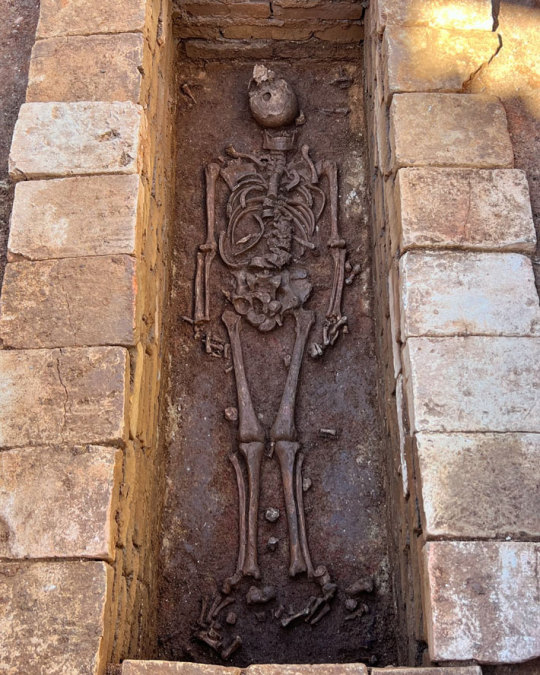
Three Roman Graves Uncovered in Portugal
Three burials dating to the 5th or 6th century AD have been unearthed in the ancient Roman city of Ossónoba in Faro, southern Portugal.
The Ossónoba’s first archaeological evidence dates back to the 4th century B.C., when the Phoenicians settled in the Western Mediterranean. The city was then called Ossónoba From the 2nd century B.C. until the 8th A.D. the city was under Roman and Visigoth dominance being afterwards conquered by the Muslims in 713.
A team of archaeologists from ERA Arqueologia discovered ancient Roman structures and the remains of a man, woman, and child while conducting excavations over a 5,000 square meter area that will eventually house a real estate development.
The excavations, which took place before a construction project, revealed the grave of a man whose skeleton was complete and who would have been between 39 and 45 years old, as well as a young woman under the age of 25, and a baby who would have been no more than six months old, according to archaeologist Francisco Correa.
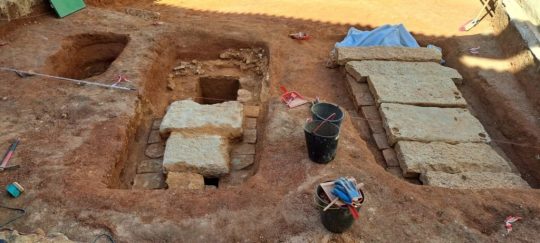

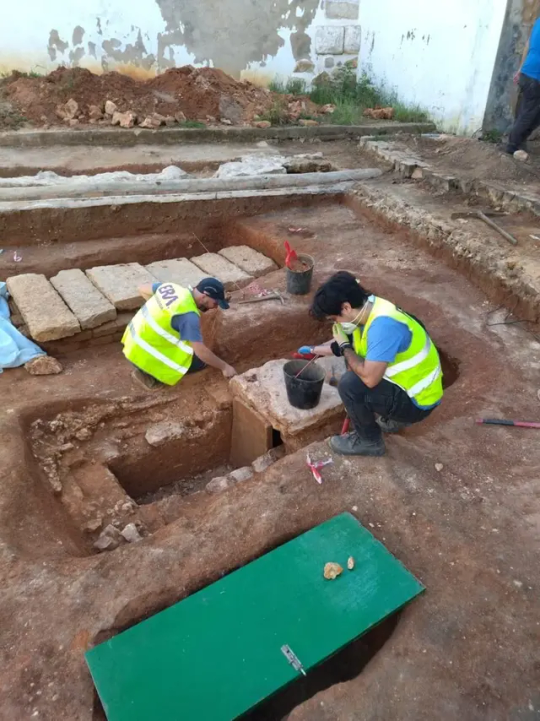
Francisco Correia, the project’s head archaeologist, said in a statement that the discoveries were made in an old truck repair workshop and are believed to date from the 5th or 6th century.
The tombs appear to have been looted in the past to steal “small bracelets, necklaces, and rings,” according to anthropologist Cláudia Maio. The tombs indicate that the people may have had “some economic status” as they were not simply placed in open graves but instead buried in carefully built graves.
The proximity of the three people’s graves seems to indicate that they were family members, though the team cannot be certain of that. “But we cannot say anything for sure,” the anthropologist said.
To learn more, the researchers hope to be able to provide more precise answers through DNA tests and isotopic analysis techniques used to determine population movements and dietary habits from chemical traces in ancient human remains.
This latest archaeological discovery did not come as a surprise to archaeologists, who had already led similar works which resulted in the discovery of a Roman game artifact believed to date back to the first century AD in 2020.
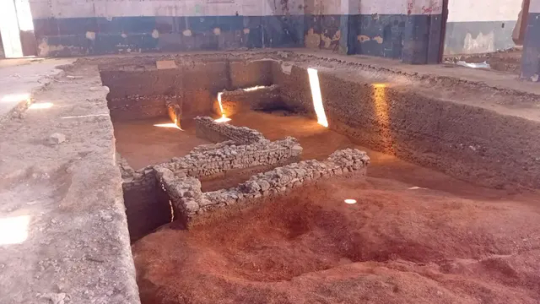

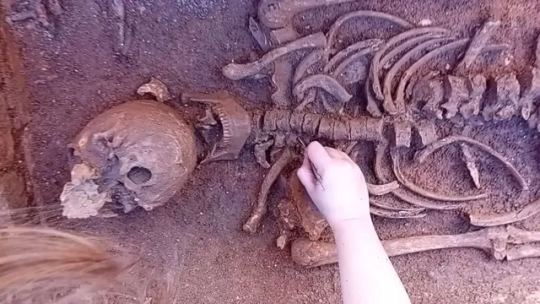
“We know that we are in an area with archaeological potential where there is a 17th-century convent (of Santo António dos Capuchos) to the west, and to the east lies the area where the mosaic of the Ocean God (Deus Oceano), now a national treasure, was found,” he said.
What did come as a surprise to archaeologists was the location of the tombs.
“Based on previous studies, this would have been an area that was possibly residential or more linked to industrial activities. There are many traces of salterns. Largo da Madalena would have been the entrance to the urban area of the city of Ossónoba. The identified graves are in the Figuras area, near Teatro Lethes, close to the Ermida de São Sebastião and the Pavilion of Escola D. Afonso III. This area is almost within the urban fabric,” the archaeologist explained, adding that this illustrates both the “growth and decline of Ossónoba.”
The graves of the man and the woman “were sealed with limestone slabs,” believed to be reused parts from “some of the most emblematic buildings that would have been here in the area,” he believes.
According to the project manager of ERA Arqueologia, who was co-responsible for the work, in addition to the graves, hundreds of small pieces were also discovered which suggest that there may also have been a mosaic there.
The researchers also recovered Roman artifacts in the area, including ceramics, bone dice, nails, pins, a spoon, possible evidence of a dye factory, and coins minted during the reign of Constantine the Great, between A.D. 306 and 337.
Cover Photo: Roman mosaic of the god Oceanus, part of the ancient city of Ossónoba, the modern town of Faro, in Portugal.
By Leman Altuntaş.
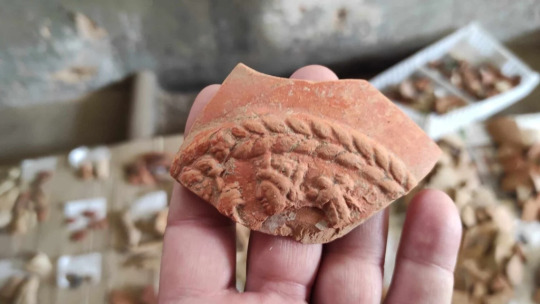
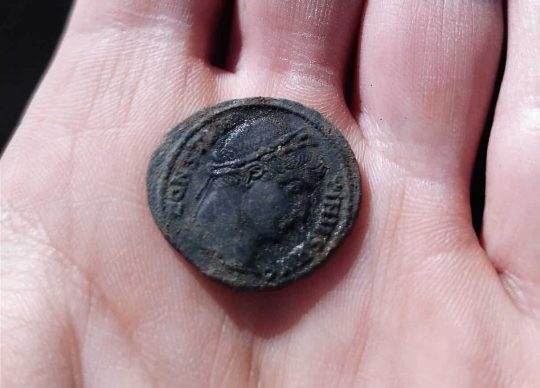
#Three Roman Graves Uncovered in Portugal#Roman city of Ossónoba in Faro#ancient grave#ancient tomb#ancient artifacts#archeology#archeolgst#history#history news#ancient history#ancient culture#ancient civilizations#roman history#roman empire#roman art
256 notes
·
View notes
Text

Veio à minha atenção que andam a shipar o D Sebastião com o João Afonso da Silva
#my pookies#aph portugal#dom Sebastião#hetalia#aph#hws#portuk#porteng#portugal hetalia#baleng#engport
20 notes
·
View notes
Text
4 portuguese monarchs who might had same-sex relationships:
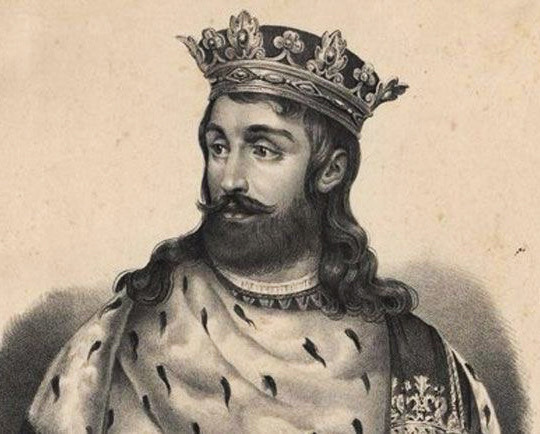
1) Pedro I of of Portugal, certainly, one if the most renowned portuguese monarchs, largely due to the saga of “love and passion” with Inês de Castro. Yet, it was common knowledge that she wasn't the Pedro’s only love: he harboured a passion for his squire, Afonso Moreira, a relationship that ended as disastrously as his other romantic (or not) entanglements. On one fateful occasion, Afonso was caught in bed with Catarina Tosse, wife of Lourenço Gonçalves, who was an esteemed magistrate.
Throughout his reign, Pedro earned the epithet “the Cruel” for his ruthless administration of justice, whereby transgressions of any magnitude often resulted in swift execution. Pedro’s decision to order Afonso’s castration as punishment for his adultery starkly manifested his merciless ethos. Nevertheless, according to Fernão Lopes, a chronicler of portuguese court at the time, in chapter VIII of “Crônica de el-rei D. Pedro I”, his harshness stemmed from a surge of jealousy on the king’s part upon discovering his beloved squire’s relationship with a woman.
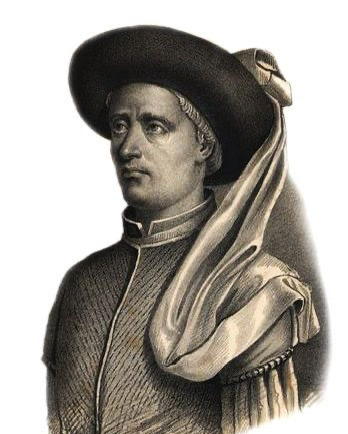
2) Prince Henry, revered as “the Navigator”, occupies a central role particularly during the epoch of maritime exploration.
He was hailed as “chaste prince”, having never entered into wedlock, with no historical accounts suggesting (with certainty) any relationships with women. In the annals of 1444, Henry experienced the loss of a “dear friend” in Ceuta, a tragedy that pluged him into 3 months of profound mourning. Both his father, King John I, and his brother, King Edward, counselled him to “rein in his emotions, lest he indulge men beyond what virtue dictates.”
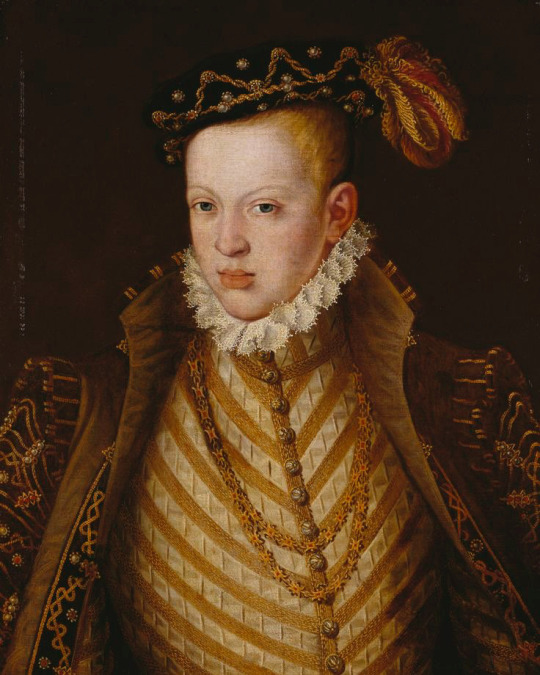
3) King Sebastian contracted gonorrhoea at the age 10/11, a malady documented in medical records at the time that rendered him sexually impotent. Some historians posit that this affliction may have dissuaded Sebastian from pursuing matrimonial unions or romantic relationships with women.
Even though, the “Crônicas de el-rei D. Sebastião” by Friar Bernardo da Cruz recounts an incident during a hunt in the Alentejo, where the entourage of nobles accompanying King Sebastian were stirred by a commotion. Investigating the disturbance, they stumbled upon the monarch locked in an embrance with a fugitive slave amidst the woodland.

4) King Afonso VI, sibling to Queen Catarina of Braganza, earned a reputation for rebeliouness and unruliness from a tender age, yet he harboured no ambitions for kingship.
His reign , marred by a series of missteps, was etched in history for its futile ventures. Despite grappling with severe health afflictions — such as partial paralysis stemming from hemiplegic fever, and scourge of bulimia — Afonso found solace in nocturnal escapades with his inner circle of friends. Among them was António Conti, an intalian peddler of opulent attire and accoutrements to Europe’s nobility. Conti’s sway in Afonso’s court burgeoned as he assumed the role of sartorial advisor and facilitator of introductions to foreign luminaries. Also, both grew increasingly closer to each other, with Afonso avoiding royal gatherings to spend time with Conti, mostly in his chambers.
In 1666, Afonso took the hand of Maria Francisca Isabel of Savoy, yet their union was fleeting. Maria, citing non-consummation owing to Afonso’s hemiplegia, sought an annulment. In letters to his sister, he bemoaned Maria’s coercive measures, by which she compelled him into relationships with 14 courtesants in a bid to unearth the root of their marital discord.
Seeking to shield Afonso’s sovereignty and secure the portuguese lineage, Luisa de Gusmão, his mother, sanctioned the arrest and subsequent exile of Conti to the distant shores of Brazil.
#i am sorry for how long it is#but i really wanted to post it#so there you have#theres other monarchs to talk about#but these are the ones with the most evidences#pedro i of portugal#prince henry#king sebastian#afonso vi of portugal#portugal#story time
18 notes
·
View notes
Note
Já vos disse aqui no tumblr que a minha professora de história pertence a um grupo de historiadores que acreditava de D. Sebastião era gay? Não do tipo "sou gay porque gosto de homens" mas mais pela Grécia Antiga tipo "sou gay porque odeio mulheres", porque quando ele era pequeno foi abusado por monjas, e a partir dai nunca mais gostou de mulheres, e dai sempre ter recusado casar nem teve casos com nenhuma
estou a ver que nao conhecem a historia do javali
25 notes
·
View notes
Text

''Livro das escrituras da Ordem de Nosso Senhor Jesus Cristo mandado fazer por D. Sebastião ao Dr. Pedro Álvares do seu desembargo e cavaleiro professo da Ordem de Cristo [Military Order of Christ (Portugal), former order of Knights Templar]'', 1560-1568, Ordem de Cristo e Convento de Tomar, liv. 235. © Arquivo Nacional da Torre do Tombo (ANTT)
20 notes
·
View notes
Text

Armando Filipe da Costa Amaro, A Indústria Conserveira na Construção da Malha Urbana no Algarve, Vila Real de Santo António, Algarve, Portugal
No século XVIII, durante o reinado de D. José I, foi construída por ordem de Sebastião José de Carvalho e Melo – Marquês de Pombal –, Vila Real de Santo António, na margem portuguesa do Rio Guadiana.
Com o objetivo de tornar a região algarvia mais rentável e controlar o contrabando, que se verificava junto à fronteira com Espanha, o Marquês comanda ao Governador do Algarve, em 17 de dezembro 1773, que desenvolva um plano para uma vila de traçado regular, com a pretensão de explorar os recursos naturais de Monto Gordo, então uma vila de cabanas ocupada por Espanhóis. Contudo, o local escolhido para erguer a nova vila foi junto às ruínas de Santo António de Arenilha, a antiga povoação que existiu entre o século XVI e XVII, junto à margem do Guadiana, que apesar do seu despovoamento durante a guerra da restauração, conservou os seus poderes institucionais, com a movimentação da sua população para as localidades mais próximas, nunca deixando de existir.
Ali estariam reunidas as melhores condições para construir uma vila regular, com terrenos propícios ao cultivo, fácil acesso a água potável e, ainda, protegida da subida das águas. Assim, os poderes de concelho e município da povoação de Arenilha foram herdados por Vila Real de Santo António (Correia, 1997, p.69; Pessanha, 2014, p. 77-88).
https://conservasdeportugal.com/a-industria-conserveira-na-construcao-da-malha-urbana-no-algarve-das-estruturas-produtivas-a-habitacao-operaria-1900-1960-5/
#Portugal#Património#Algarve#Armando Filipe da Costa Amaro#Museu Digital da Indústria Conserveira#Vila Real de Santo António
3 notes
·
View notes
Text
DIA 25 DE ABRIL DE 2024 : COMOVIDO COM O MUSEU ABEL MANTA EM GOUVEIA : comoveu-me o encontro com o museu dedicado a meu tio. !O imponente edifício do século XVIII foi mandado construir pelos primeiros senhores da Casa do Toural, . Já no século XX, o solar pertenceu aos Condes de Vinhó e Almedina cuja mulher, D. Luísa Guimarães Guedes foi a grande impulsionadora dos estudos de Abel Manta em Lisboa. Em 1981, o Município de Gouveia adquiriu o edifício onde instalou a Biblioteca Municipal e um Museu de temática geral. Em 1983, foi o local escolhido para a exposição retrospectiva da obra de Abel Manta, homenagem ao pintor gouveense, falecido no ano anterior. Esta exposição iniciou o processo que viria a culminar com a constituição de um Museu Municipal dedicado à arte moderna.O Museu Municipal de Arte Moderna abriu a 17 de fevereiro de 1985.:. A coleção do Museu foi constituída a partir da doação efetuada, em 1985, pelo filho de Abel Manta,o arquiteto, pintor e artistas gráfico João Abel Manta.. O núcleo central da coleção é composto por peças de notáveis artistas plásticos do século XX português – dos primeiros modernistas aos anos 80 . Outros nomes representados são Clementina Moura e João Abel Manta, Sara Afonso, Dórdio Gomes, Mª Helena Vieira da Silva, António Duarte, Carlos Botelho, Bernardo Marques, Fred Kradolfer, Manuel Mendes, José Dias Coelho, João Hogan, Joaquim Rodrigo, Luís Dourdil, Maria Keil, Mário Dionísio, Rolando Sá Nogueira, Júlio Pomar, Júlio Resende, António Dacosta, Jorge Vieira, Querubim Lapa, Menez, Lagoa Henriques, Marcelino Vespeira, António Charrua, Lima de Freitas, Carlos Calvet, Sebastião Rodrigues, Rogério Ribeiro, Lurdes Castro, Nikias Skapinakis, Bartolomeu Cid dos Santos, Hilário e Gil Teixeira Lopes, António Costa Pinheiro, Maria Velez, René Bértholo, José de Guimarães, Manuel Baptista, Espiga Pinto, António Sena, Paula Rego, Fernando Conduto, Victor Fortes,António Palolo, Zulmiro de Carvalho.Senti de forma cruel a falta da Zaza . Ela era adorada pelos Mantas e foi pintada por meu tio quando me mobilizaram para a guerra do Ultramar .

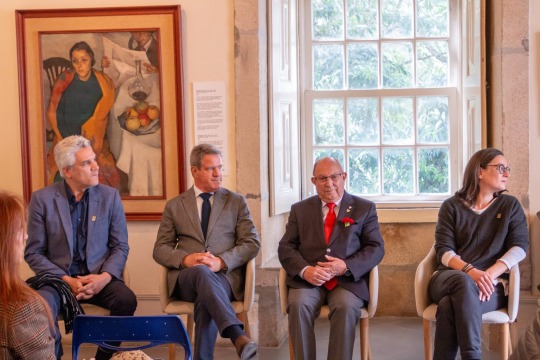


2 notes
·
View notes
Text
olá lindux. tá tudo bem?
estou a retornar dos mortos (corporate hell) para relembrar que o dia e noite dos museus está a chegar e que se Deus quiser eu pessoalmente vou estar a beber jolas e abanar o capacete no terraço do MNAA com uma montagem do D. Sebastião seminu com um sixpack a pairar sobre mim.
anyway, podem ver o programa aqui: https://w3.patrimoniocultural.pt/museus2023/digital/index.php
está uma merda e ainda em atualização, mas é o que temos.
vocês andam bem? espero que sim. se quiserem mandem-me asks a fazer updates da vossa vida que tenho saudades de ouvir sobre os vossos dias.
4 notes
·
View notes
Text
10 songs, 10 people
put your music on shuffle and list the first ten songs that come up, then tag ten people (thanku for the tag @arktwend !! i like these lil games :’D)
Doubt It - The Amazons
Doomsday - Globus
No Second Chance - Blackmore’s Night
Fields of Verdun - Apocalyptica
Twa Corbies - Ayreheart
Paranoia - Koethe
Blood and Whiskey - The Mechanisms
Turn Back, O Man - Morgan James, Godspell Cast
Rumors - Poets of the Fall
Cantiga da Burra - Sebastião Antunes & Quadrilha, Galandum Galundaina, Luis Peixoto
i do not have 10 people to tag !! but mutuals i am Looking at u owo
#specifically looking at rime n rust bc i know u are little freaks for music u3u#ty again for the tag mr sefiros mr arktwend !!#smh my music is all over the place#tinta talks
2 notes
·
View notes
Text
that happened to my good friend, the king of Portugal, D. Sebastião
This close 🤏 to walking into a mysterious fog and never coming back
48K notes
·
View notes
Video
youtube
D. Sebastião Estão à Sua Espera - Episódio 1
#youtube#youtuber#podcast#podcasts#podcasting#podcaster#humor#comédia#rir#lol#paródia#d. sebastião#portugal#portugueses#nemseioquedizem#nem sei o que dizem
0 notes
Text

Mais de um ano sem deixar aqui memórias, quem sabe que tal como o D. Sebastião apareço do meio do nevoeiro...
0 notes
Text

Se você está em busca de tranquilidade, comida caseira, cachoeiras deslumbrantes e um povo acolhedor, Olhos D'Água é o lugar perfeito para você. Minha conexão com essa encantadora localidade começou na infância, quando meus pais nos levavam para a Feira do Troca, um evento que atrai muitos visitantes e anima a cidade. Com o tempo, redescobri Olhos D'Água sob uma nova perspectiva, apreciando seu sossego e beleza natural, que contrasta com destinos mais movimentados como Pirenópolis ou Alto Paraíso. Recentemente, passei um fim de semana lá com minha mãe e compilei uma lista de atividades imperdíveis. Embora tenhamos feito uma visita rápida de um dia, recomendo que você considere prolongar sua estadia. Um sábado é ideal para relaxar e até levar um bom livro para aproveitar a calmaria local. Se você estiver viajando com crianças, não deixe de visitar o pesque-pague, que é uma atração divertida para toda a família. Resumo Demográfico do Município Olhos D'Água é uma cidade encantadora localizada no estado de Goiás, conhecida por suas belezas naturais e rica cultura. O município é cercado por paisagens deslumbrantes, com rios, cachoeiras e uma vegetação exuberante, tornando-se um destino ideal para quem busca tranquilidade e contato com a natureza. Além disso, a cidade possui um patrimônio histórico que remete à época da colonização, com igrejas e construções que contam a história da região. População: Aproximadamente 3.500 habitantes. Área: 1.200 km². Densidade demográfica: 3 hab/km². Principais atividades econômicas: Agricultura, pecuária e turismo. O que Fazer em Olhos D'Água/GO Praça Santo Antônio Comece sua exploração na Praça Santo Antônio, onde você pode passear e apreciar a atmosfera tranquila do local. Nos sábados e feriados, a praça abriga uma feirinha com artesanato e iguarias deliciosas. O lugar em si é um encanto, com sua igreja histórica e as coloridas casas que cercam a praça. Um fato curioso: a linha de Tordesilhas, que foi estabelecida pelo Tratado de Tordesilhas entre 1494 e 1750, passa exatamente pelo centro da praça de Olhos D'Água. Conversando com um morador local, Hélio, soube que durante o carnaval há uma animada disputa entre os blocos dos espanhóis e portugueses, que fazem um cabo de guerra justamente na linha marcada. Bares Tradicionais Se você aprecia uma boa cachaça ou cerveja, Olhos D'Água não decepciona. A cidade conta com uma variedade de bares que atendem a todos os gostos, desde os tradicionais botecos até locais que servem cervejas artesanais, incluindo o famoso Bar Museu. O Bar Museu, situado na praça, é uma experiência à parte. A Dona Cecília, que está à frente do bar desde 2002, traz um pouco de sua vivência de viagens, decorando o espaço com recortes de jornais, pôsteres antigos e receitas tradicionais de cachaça. Conversar com ela é como mergulhar em uma história viva, onde fantasia e realidade se entrelaçam. Recomendo experimentar a mistura de pinga com mel e limão – uma delícia que custa apenas 5 reais a dose. Artesanato Local Logo na chegada, você encontrará artesanato em várias casas ao longo das ruas. Entre as artistas locais, Maria Abadia se destaca com suas bonecas e vasos, enquanto D. Francisca é conhecida por seus tapetes trançados. O Seu Divino também oferece encantadores vasos de barro. Um dos achados mais interessantes que encontrei foram os primeiros santos de palha que vi, muito antes disso se tornar uma tendência. Desta vez, pude apreciar bordados únicos que refletem a criatividade e a cultura local. Principais Pontos Históricos da Cidade - Igreja Matriz de São Sebastião: Construída no século XX, é um importante marco histórico e cultural da cidade. - Casa da Cultura: Um espaço que abriga exposições e eventos culturais, preservando a história local. - Fazendas Históricas: Muitas das fazendas na região datam do período colonial e são testemunhos da história agrícola de Goiás. Pontos Turísticos de Olhos D'Água - Cachoeira do Olho D'Água: Uma das principais atrações da cidade, com águas cristalinas e um ambiente perfeito para um dia de lazer. Ideal para banhos e piqueniques. - Praça da Matriz: O coração da cidade, onde se encontra a Igreja Matriz de São Sebastião, um belo exemplo da arquitetura colonial. A praça é um ótimo lugar para relaxar e apreciar a vida local. - Rios e Trilhas: A cidade é cercada por rios e trilhas que permitem a prática de atividades ao ar livre, como caminhadas e passeios de caiaque. - Mirante do Olho D'Água: Um ponto de observação que oferece vistas panorâmicas da região, especialmente ao pôr do sol. - Fazendas Históricas: Visite as fazendas que datam da época colonial, onde é possível aprender sobre a história da região e a produção agrícola local. Gastronomia Local de Olhos D'Água A culinária de Olhos D'Água é rica em sabores típicos da região, com destaque para pratos à base de peixes de água doce e ingredientes locais. Os visitantes podem desfrutar de uma experiência gastronômica única em diversos restaurantes e cafés. Sugestões de Restaurantes em Olhos D'Água - Restaurante Sabor do Campo: Oferece pratos típicos da culinária goiana, com um ambiente acolhedor e familiar. - Churrascaria Olho D'Água: Famosa por seu churrasco e pratos regionais, ideal para um almoço em família. - Café da Praça: Um local ideal para um café da manhã reforçado e lanches. - Restaurante O Casarão: Comida caseira e um ambiente aconchegante, perfeito para relaxar após um dia de passeios. - Empório da Serra: Produtos locais e refeições rápidas, ideal para quem está em movimento. Distâncias para as Principais Cidades e Aeroportos a partir de Olhos D'Água Situado a 123 quilômetros da capital federal, Brasília, esse charmoso vilarejo é um distrito de Alexânia e oferece uma experiência única para quem deseja relaxar e se desconectar da agitação das grandes cidades. Continue lendo para descobrir como chegar e o que fazer em Olhos D'Água. - Goiânia: ~150 km - ~2h de carro - Brasília: ~300 km - ~4h de carro - Rio Verde: ~100 km - ~1h30 de carro - Aeroporto de Goiânia (Santa Genoveva): ~150 km - ~2h de carro - Aeroporto de Brasília (Juscelino Kubitschek): ~300 km - ~4h de carro O que o Alugue um Chalé achou de Olhos D'Água/GO Olhos D'Água é um destino que combina beleza natural e rica história. Com suas cachoeiras, trilhas e uma gastronomia deliciosa, a cidade oferece uma experiência única para todos os visitantes. É o lugar perfeito para quem busca relaxar e se conectar com a natureza, além de explorar a cultura local. Planeje sua visita e descubra tudo o que Olhos D'Água tem a oferecer! Read the full article
0 notes